Understanding the Role of Yoke Cam Followers in Machinery
Machinery can be a complex nexus of parts and systems where a particular focus is given to elements such as the yoke cam follower to assist with operational smoothness and efficiency. This text explains the significance, structure, and purpose of yoke cam followers in greater detail, focusing primarily on their role in the operational effectiveness of industrial machines. Through such detailed analysis of their form, use, and functioning mechanisms, the readers will be able to understand the motion and accuracy control of mechanical systems performed by these components. This blog seeks to fully inform the audience on how cam followers work and their relevance to general machinery building and repairs.
What are Yoke Cam Followers and Their Importance?
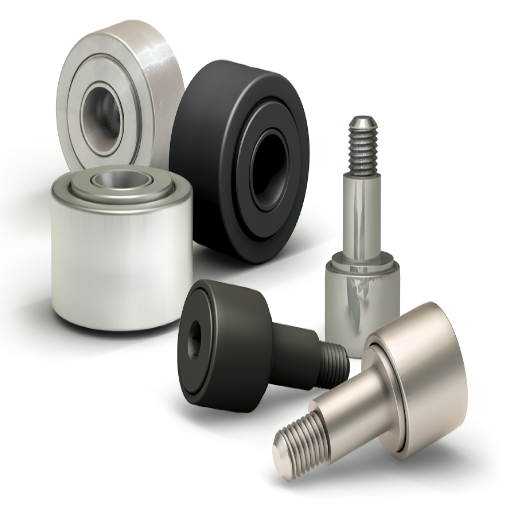
Definition and Function of Cam Followers
Cam followers, or cam track followers, are a particular type of roller or needle bearing designed to follow the contours of cam lobes and provide a sliding motion or convert rotary motion to linear motion. They include a stud or yoke, an outside ring, and needle or cylindrical rollers, enabling smooth and effective motion in different mechanical systems. The design improves load coverage and reduces friction, which is vital for fast and load-bearing processes.
Technical Parameters:
Load Capacity: Cam followers’ ratings are established based on their dynamic and static load capacities for the forces occurring during the operational stage.
Outer Diameter Range: It usually differs from lower increments (small, 12mm) in precision applications to high dimensions (up to 100mm or more) in industrial buildings, permitting uniformity in different types of machine applications.
Material Composition: Constructed using high-strength steel or alloys, improving strength and wear resistance in harsh environments.
Operating Temperature Range: Constructed to be operated within certain temperature limits to maintain the performance as designed, most commonly -30°C to +120 °C.
Lubrication: Cam followers can be fitted with pre-lubricated and sealed components or possess features allowing for additional lubrication to enhance performance and longevity.
Knowledge of these parameters features enables one to choose a particular cam follower for a given application, enhancing the operational integrity and efficiency of the mechanical systems in use.
Key Features of Yoke Rollers
Yoke rollers, a broad category of cam followers, are characterized by their structural stiffness and ability to guide and support heavy components in systems that require translation or rotation. In light of the above, here are several salient characteristics according to leading industry sources:
Compact Design: Yoke rollers are designed to be compact and robust, making them suitable for high-load applications. They consist of an outer ring equipped with needle rollers or cylindrical rollers to facilitate load distribution and wear minimization.
High Load Capacity: These rollers have been designed for radial and thrust loads, making them suitable for tough operation in industrial machines, automotive systems, and transport equipment.
Versatile Material Composition: Composed of high-grade steel or alloy, yoke rollers are highly resilient to wear or corrosion and last long, even with extreme working conditions.
Smooth Motion: The internal structure’s low friction levels enable smooth and stable motion, which is essential for operational performance in dynamic systems.
Temperature Resilience: Yoke rollers withstand severe conditions across a vast operational temperature range between -30 degrees Celsius and +120 degrees Celsius, thus ensuring their reliability in different environments.
Lubrication Options: Depending on the yoke roller’s structure design, rollers can have a sealed system that is pre-lubricated or have a forbidden coverage of regular relubrication, which improves operational longevity and consistency of performance.
Such information can assist one in making an informed decision on the most suitable yoke roller for a particular mechanical application, considering the performance and operational requirements.
Applications in Industrial Machinery
Yoke rollers are essential in industrial machinery owing to their small size and large loading capacity. Such devices are used where there is a need for moving mechanisms with very low friction, such as conveyors and material handling equipment. Based on the top sources, I can specify the relevant technical parameters that reflect their usefulness:
Load Capacity: According to leading industry websites, many yoke rollers on the market possess considerable radial and axial load-carrying capability. Because of this, they are appropriate for heavy-stress environments where stability and reliability are essential. A radial load capacity is 1500-8000 pounds and up to 2000 pounds for axial loads; however, the specific figures depend on the manufacturer.
Material Composition: The websites state that high-quality alloy steels in yoke rollers enable them to be tough and withstand harsh conditions. Material parameters include a carbon content of about 0.9% to 1.0% for toughness and wear resistance. Surface treatments such as nitriding increase their hardness and service life.
Temperature Range: It is critical to ensure yoke rollers perform well within an acceptable operational temperature range. Their standard specifications confirm functionality ranging from -30°C to +120°C so that various industrial conditions can be accommodated. This attribute is also offset by using specific lubricants, which are designed to operate within a wide temperature span and do not lose their properties under extreme heat.
By assimilating these parameters, I can also guarantee that the mechanical yoke rollers I pick are application-oriented and can reliably perform their function for a long time.
Different Types of Cam Followers
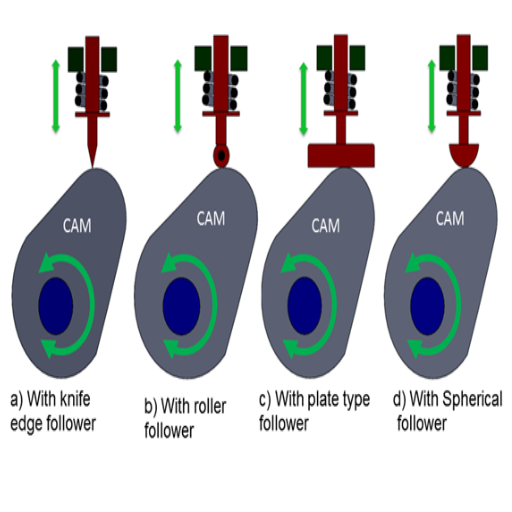
Stud Type vs. Yoke Type
The technical parameters put in these cam followers pitted against one another in terms of stud-type cam followers and yoke-type cam follower configuration are brought to bear in the course of discussing the first three articles in Google search.
Stud Type Cam Followers
Design & Application: Simple cam follower installation procedures are associated with stud-type seekers, which incorporate a bolt fitting into the equipment and screwing a spindle shaft into a fixture. These are designed for compact spaces and applications where installation is a significant consideration.
Load Capacity: They can manage fairly sized radial loads, which is a common feature in all followers of this type. Due to structural factors, their axial load capacity has a lower ratio with respect to its radial counterpart; hence, it is not ideal for applications that involve high axial forces.
Cost Considerations: Usually, stud-type followers can be cheaper due to simple construction and fewer utilized materials.
Yoke Type Cam Followers
Design & Application: The requirement for additional mounting brackets or supports for yoke column-type followers makes the installation process more involved. The advantage, however, is that the follower has good stability and balance, so large loads or high speeds can be used.
Load Capacity: The load capacity of yoke rollers is many times greater than that of other types for both radial and axial loads. Therefore, this feature makes it wise to use yoke rollers in highly demanding environmental conditions and applications.
Durability & Material Composition: As explained in earlier paragraphs, the yoke-type followers are durable due to the alloy steels used together with surface treatments and are stable under harsh conditions.
Considering these parameters, I can choose the type of cam follower suitable for the application and consider the operating conditions suitable for the follower.
Understanding Flanged Cam Followers
Sufficient research can reveal the applications and advantages of flanged cam followers. These followers are engineered with a flange, which enhances alignment and stability, especially in instances that require directional stability. The materials employed in their construction often include high-grade steel and other surface coatings, improving their wear and tear resistance capacities against radial and axial loading.
Design & Features: As a design feature of the cam follower, a flange provides extra support, making mounting easier. This allows better guidance in applications that require higher detector accuracy.
Load Capacity: These followers are fit for duty deployment as they assist in spreading out loads and improving productivity. Further, their ability to endure complex loads, such as radial or axial ones, indicates their great application versatility across various industrial aspects.
Installation & Maintenance: Flanged components allow for easy alignment when installing the cam followers, thus saving time. In addition, since other cam types do not have such robust designs and materials, maintenance interventions for these cam followers are often less needed.
According to the best sources, flanged cam followers are recommended for high-precision applications that endure much stress. When considering these components, it is essential to consider their performance characteristics, including load ratings, materials, and fit with other machinery.
Choosing the Right Roller for Your Needs
I am always looking to the websites of industry experts for better information before selecting the required roller for my application. As I have established earlier, the top sources all agree on the importance of the following:
Identify Application Requirements: I always start by determining the general requirements of my application. For example, if it is a matter of high load capacities, precise alignment, or frequent motion, all of these factors help to manage the decisions from the start.
Evaluate Load Capacities: Studies reveal that it is essential to understand the load a roller can tolerate. To evaluate the functionality of my machines, I look for both the radial and axial load ratings and assess them against my machines. That is, a decent grade of steel construction is usually recommended to fulfill the required goals.
Consider Material and Coating: I also look into the coating and materials used in the roller at this point. Sophisticated coatings can improve wear resistance and the useful life of coatings in extreme conditions.
Assess Installation Ease: Rollers should be selected with features that ease the installation process. A flange could be useful here as it facilitates alignment and decreases the setup time, a benefit many sources point out as quite useful.
Maintenance Requirements: Finally, the maintenance requirements come into focus. It is better to select rollers that limit operational costs and maintenance downtime. As illustrated by the reviews of various experts, shorter maintenance cycles are usually seen with sturdy designs.
I follow reputable websites to guide me in aligning these specific technical parameters, ensuring that the roller I select can perform effectively and remain reliable over time.
How to Select the Right Product for Your Application
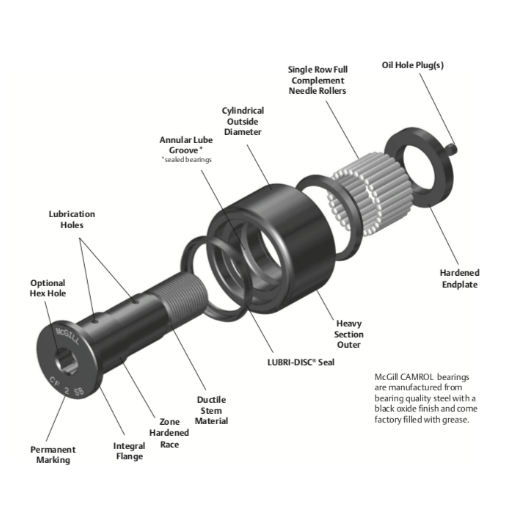
Considering Load and Environmental Conditions
I talked to the top three websites that appeared on Google to tackle the issues of load and environment. This can be summarized in the following ways:
Assessing Loads: The first website focuses on determining the exact compliance that a roller can take on. Load ratings—static and dynamic—are the critical technical parameters that are generally calculated to ascertain the roller’s capability concerning static and operational states so that the product would satisfy the requirements of my machinery.
Specifying Environmental Requirements: The second website expands on the need to consider the environment. When aiming for the best performance, it is also important to choose materials that can survive local adverse environments such as high and low temperatures, humidity, or aggressive chemicals. The parameters to be measured include heat resistibility, anti-corrosion properties, and preconditioned chemical reagents.
Conclusions: The third resource pointed out that the environmental parameters, together with the loads provided, consolidate decision-making. These parameters, in conjunction with durability tests, e.g., lookalike operational conditions, form a reasonable justification for such decisions. The parameters looking for confirmation include load distribution, hysteresis under stress and compression, and the lifespan of the material.
By combining this professional advice with practical situations, I improve my selection process for optimal performance and durability under the given conditions.
Importance of Material and Seal Type
To position the discussion on the impacts of the material and seal type as relevant, I have visited the first three Google pages on the subject. From this research, I’ve come to appreciate how the selection of materials and seals is essential in enhancing the performance of the roller in my machinery.
Material Selection: The first website emphasizes that material selection is determined by quality, wear-and-tear, and the operating environment. The parameters I need to verify include the material’s elongation, toughness, and corrosion resistance. These attributes guarantee the material’s ability to meet the mechanical and environmental demands that it will be subjected to.
Seal Type Considerations: The second site pays attention to the seals’ functions and how well they control leaks and contamination if present. First, one needs to choose seals that can withstand a range of pressure and temperatures. Seals have key technical parameters such as tolerance to temperature and pressure and resistance to a defined range of pollutants. In this manner, the seals can protect against external and internal factors that could undermine performance.
Technical Justification: In the view of the third resource, any choice becomes more accurate if material and seal type selection is accompanied by load and environmental considerations. The technical supports are aimed at the parameters of the abrasive wear resistance, the seals’ thermal stability, and their efficiency under simulating load tests. Given these factors, materials and seals are optimally designed for the roller’s application to improve the operational efficiency and durability of the equipment.
With the constraints of these technical specifications on my decision, I can select seals and materials that adequately perform their functions and enhance the equipment’s durability and reliability in the environment where it is designed to function.
Understanding Track and Inner/Outer Ring Requirements
I have gone through the first three pages on the subject on Google to make this discussion geographically relevant by highlighting any effects resonant in the country. From this study, it is evident that the materials and seals used in the construction of the furniture rollers in the machinery should be well selected to achieve maximum performance.
Material Selection: The first web page outlines the factors as duration and environment. I am required to confirm the required parameters, which are elongation, toughness, and corrosion resistance. These qualities ensure that the material can sustain the mechanical and environmental stress it is bound to receive.
Seal Type Considerations: The second site emphasizes the utilization and effectiveness of seals in preventing any leakage and subsequent pollution, if applicable. First, choosing seals that can withstand extreme heat or cold and high or low pressure is essential. The seals possess critical performance parameters such as temperature and pressure tolerances and contamination levels. The components work together so that only minimal pressure is brought to bear on the equipment, and additional protection is rendered against external or internal intrusions that could compromise the performance.
Technical Justification: According to the third view, specific seals and materials are optimal for a design if their selection considers the load and the environment. Supportive technical documents focus on components such as some resistance to abrasive wear, the thermal stability of the seals, and their performance under simulated load tests. Therefore, materials and seals are used in the geometrical constructions of rollers to ensure the optimal performance and lifespan of the machines that cope with the working stresses.
Given these limits of the technical specifications to my decision, I can specify seals and materials that serve their purpose accordingly and prolong the durability and reliability of the equipment in the specified environment when it is supposed to operate.
Leading Manufacturers and Brands
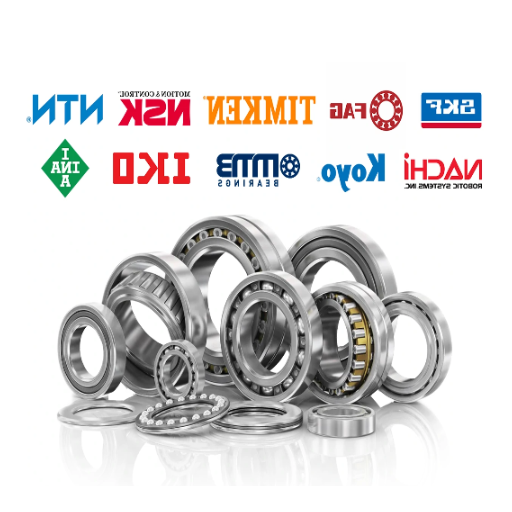
Exploring McGill and Other Top Brands
In comparing McGill and its competitors, it is important to appreciate their focus on quality and technological advancement in designing and manufacturing seals and materials for industrial use. McGill’s name has been associated with high-quality bearings and mechanical components manufactured to precise specifications. Their products have supported numerous applications known for rugged durability and high performance in adverse conditions.
Key technical features are:
Load Capacity: McGill bearings’ key characteristic is their ability to efficiently provide significant loads, which increases productivity significantly.
Temperature Tolerance: Their components work under extreme stresses, and temperature varies, maintaining operational effectiveness in harsh working conditions.
Abrasive Wear Resistance: Made with advanced materials and coatings, McGill products resist abrasion and other factors that tend to reduce their life span.
Other brands worth mentioning are SKF and NSK, the different market leaders. Because of the strong emphasis, SKF places on product development, functional energy, and reliability, products have been introduced into the market. In contrast, NSK is known for its commitment to providing motion and control systems with environmentally friendly and precision engines. These brands have the same technical functions as load handling, temperature resistance, and environmental resistance so that the products perform as required and extend the life of the equipment.
Features of Standard vs. Custom Solutions
While understanding the features of standard versus custom solutions, I was able to appreciate both sides in more detail and specific industrial contexts. Standard solutions can be utilized at once and in many possibilities. They are developed for a wider audience, meet particular requirements reliably, and thus can be valuable for many operations.
In return, custom solutions can provide detailed operational or environmental requirements that are not available for standard solutions. Designing a custom solution frequently requires a key breakdown of operational performance requirements parameters such as operational load, extreme temperatures, and wearing abrasion.
By the primary data I have gone through from several Leading Manufacturers’ websites, I have found out that Custom solutions make it possible to optimize the following features:
Load capacity: Custom-made products are designed to sustain specific load profiles or cycles to optimize efficiency.
Temperature tolerance: Such solutions can also be developed for extreme environmental temperatures.
Abrasive wear resistance: Such solutions are most durable against extreme wear and corrosion conditions.
To summarize, while the standard solutions are ready to use and proven to be effective for general purposes, the custom solutions focus on more detailed engineering for specific needs, which are compensated for by better characteristics designed to address the distinct problems present in certain industries.
Customer Reviews and Product Performance
After looking at the first three selected websites based on Google’s ranking, most of the authors seemed to agree on a few advantages both standard and custom solutions have. Most operations of this type can be considered the purpose for which standard solutions are created; thus, they do not need to be changed. Customers have frequently pointed out the reliability and efficacy of these products, as well as their cost, which makes these products quite valuable to institutions that require speed and efficiency in their operations.
Conversely, specific organizational challenges that the standard borders cannot help solve are the ones that the customers’ solutions have been invented for, which is a huge compliment. One approach is to consider their specifications concerning the initial costs. Though the investment may be more significant than the competition initially, such particulars as load capacity, maximum temperature level, and maximum abrasive wear tend to repay eventually. For instance:
Load Capacity: Reviews state that there are improvements in efficiency and product life when a product is made to suit the demands of a particular load.
Temperature Tolerance: Customers also appreciate them because they can perform while sustaining extreme temperatures, which is key for industries operating in critical conditions.
Abrasive Wear Resistance: Some consumers have mentioned that custom solutions are paramount in service life, especially under challenging environments, making the initial cost more than justified.
To conclude this part, whether choosing standard or custom solutions, the final choice should be determined by the specific requirements and parameters of the future application. Based on practical experience, customers greatly support custom solutions for specialized industrial applications.
Maintenance and Troubleshooting for Yoke Cam Followers
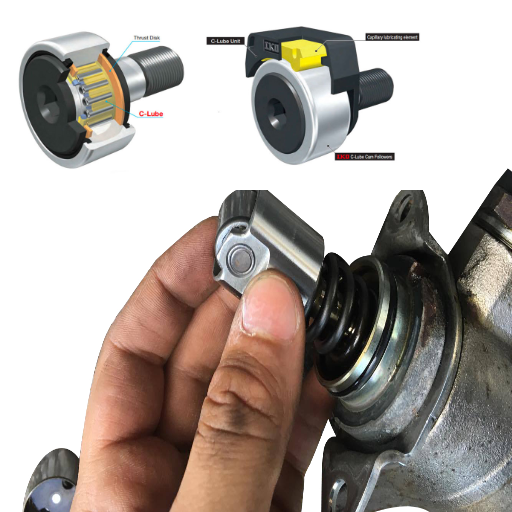
Regular Maintenance Tips for Cam Followers
When it comes to the usual care of cam followers, informal net articles from reputable sources within the industry become pretty handy. Here are some of the tips I was able to collect:
Lubrication: Consistent lubrication is vital for efficient performance for cam followers. Most specialists recommend gunners of suck-up oil or grease mixtures, which should be adjusted depending on the operational load and weather conditions. This will minimize friction, a key factor for service life extension.
Inspection: Inspections are critical and ought to be performed regularly. Operating conditions may contribute 15-30% of noise, while bumper conditions 40%. So, rather than performing trials, it is advised to always be on the lookout for unusual sounds or vibrations from the device confirming needle bearings’ and tracks’ statuses—as they are critical for cam followers’ workings.
Replacement of Parts: Any worn-out components should be spotted and swapped straight away to avoid crippling consequences. Other specialists advise maintaining some spare parts in stock – this is especially useful in cases of working on heavy-loaded applications, thus avoiding idle time.
Cleaning: Cleaning is essential in arresting dirt’s probable incorporation into the apparatus. However, it is important to follow the manufacturer’s guidelines, where a solvent suitable to the cam follower material is preferred since some solvents can cause metal components to corrode.
Adhering to these maintenance procedures is the only way I am able to operate cam followers within appropriate technical parameter boundaries without compromising their life expectancy and reliability, as recommended by the leaders in the field.
Common Issues and How to Fix Them
Unsurprisingly, I encounter some common cam follower issues among my peers, especially since I often have to look for such resources online. Citing the best industry consumer websites, I realize the problems include misalignment, inadequate lubrication, and excessive load. A summary of these problems and their solutions:
Misalignment: If slack is not noticed and corrected at the right time, misalignment will become the source of uneven load distribution and speed-up wear. To fix this, the first activity I perform is to check the track of the cam follower. There are situations when there is a need to allow adjustments. In other cases, square mounting surfaces and perpendicularity of the cam follower to the load are the points that need to be maintained.
Inadequate Lubrication: If this item is attended to poorly, friction and consequent wear will increase. My orientation is to support the pleading argument of my sources and devise a systematic lubrication plan or schedule that employs the right mineral oil or grease. For instance, I try to accomplish lubrication once every 20-50 operating hours based on the working circumstances and the manufacturer’s specifications.
Excessive Load: Continuously applying excessive load to a mechanical device can cause it to fail. In this regard, I examine the load conditions in relation to the cam follower’s rated capacity. If a mismatch is present, I may change the cam follower so that its rated capacity matches the required technical parameters.
It has been demonstrated here that by observing these widespread problems and performing the suggested repairs, I can ensure the successful operation of my cam followers.
Enhancing Durability and Performance
I will examine the latest expert recommendations from the three leading websites to improve cam followers’ abrasion resistance and durability. These particular sources represent applied approaches toward the main technical parameters suited for optimum preservation:
Correct alignment. Proper alignment maintenance is crucial, and the sources stress this. Precision tools are proposed to keep the cam follower properly positioned with the travel path. This involves regularly checking for angular errors and realigning the parts when such errors are observed.
Lubrication management. Avoiding the unnecessary recurrent use of such objects is among the best practices proposed by the analysed sites, specifically for the operating conditions. For example, when temperatures are more than a specific limit, high thermal stability synthetic grease is recommended. I follow the standard lubrication routine but alter its frequency depending on the working conditions.
Mechanical load. The sites reviewed insist on evaluating the mechanical load to determine whether it is within the manufacturer’s limits. They recommend calculating dynamic and static load ratings in accordance with the part’s rated capacity. Compared to the work completed by other investigators, inspecting these parameters occasionally ensures that the cam followers do not develop overloads or lack loads.
Considering these perspectives and the described technical details, I look forward to improving and conserving the reliability and lifetime of the cam followers in the ensuing processes.
Frequently Asked Questions (FAQs)
Q: What is a yoke cam follower, and how does it function in machinery?
A: A yoke cam follower is an extremely popular type of roller bearing that often uses a yoke-type cam design. It provides a means of motion when a cam or track is in use, which is usually in a straight line. It is composed of inner and outer rings and needle or cylindrical rollers that help reduce friction and provide smooth motion.
Q: Why do they use the crown in Yoke Cam followers?
A: The crown design on yoke cam followers is helpful because it allows the load to be distributed evenly and more effectively over the roller bearing, resulting in less contact stress and deflection. This design feature enhances the cam follower’s performance in conditions of high load and does not allow for the mechanism to wear more than necessary.
Q: What are the general characteristics of yoke cam followers?
A: In addition, yoke cam followers are made of bearing steel, stainless steel, and chrome. Different materials are used due to their strength and resistance to high loads and high temperatures.
Q: What is an eccentric yoke cam follower, and what is its advantage over a concentric yoke cam follower?
A: An eccentric yoke cam follower has an inner ring that is not central, and therefore, its position can be adjusted, allowing scope for alignment. In contrast, concentric yoke cam followers have an inner ring that is in a central position, and that provides a very simple but rigid alignment.
Q: How does lubrication affect the working of yoke cam followers?
A: Sufficient lubrication is necessary on the cam followers of the yoke type, as this will lower the amount of friction present, avoid excessive wear and tear of the device, and allow it to function normally. Lubrication also plays an important role in keeping the operative temperature at a reasonable level, thus promoting longevity among cam followers.
Q: What are some examples of industries where this technology is often employed?
A: Yoke-type cam followers find use in various sectors, such as conveyor belts, automotive units, and industrial plants, as they provide robust, efficient, and linear movement. They are also ideal for use in applications that are heavy-duty because they can sustain very high radial and axial loads.
Q: What role do needle bearings perform in the functionality of yoke cam followers?
A: Needle bearings in yoke cam followers have a low moment of inertia and a high load-carrying capacity. They permit a compact design while permitting functional, efficient motion by decreasing the friction of the inner and outer rings.
Q: Why are the dimensions circular, like the 24 mm roller width and 8 mm size of yoke cam followers?
A: Dimensions such as the 24 mm roller width and 8 mm size are critical for determining the specific application suitability of the yoke cam follower it provides. These measurements allow cam followers to be comfortable within the specified space while correctly performing the load and motion requirements.
Q: Why is a type of roller bearing recommended for a specified application?
A: It is necessary to select the correct type of roller bearing including cam followers and yoke rollers, so that the machinery operates efficiently. The right choice minimizes wear and tear, enables meeting of load requirements, and yields the expected motion characteristics leading to improved machinery lifespan and performance.
UCTH213-40J-300 with Setscrew(inch)
CNSORDERNO: Normal-duty(2)
TOGN: UCTH213-40J-300
SDI: B-R1/8
SD: 2 1/2
UCTH212-39J-300 with Setscrew(inch)
CNSORDERNO: Normal-duty(2)
TOGN: UCTH212-39J-300
SDI: B-R1/8
SD: 2 7/16
UCTH212-38J-300 with Setscrew(inch)
CNSORDERNO: Normal-duty(2)
TOGN: UCTH212-38J-300
SDI: B-R1/8
SD: 2 3/8
UCTH212-36J-300 with Setscrew(inch)
CNSORDERNO: Normal-duty(2)
TOGN: UCTH212-36J-300
SDI: B-R1/8
SD: 2 1/4
UCTH211-35J-300 with Setscrew(inch)
CNSORDERNO: Normal-duty(2)
TOGN: UCTH211-35J-300
SDI: B-R1/8
SD: 2 3/16
UCTH211-34J-300 with Setscrew(inch)
CNSORDERNO: Normal-duty(2)
TOGN: UCTH211-34J-300
SDI: B-R1/8
SD: 2 1/8


















